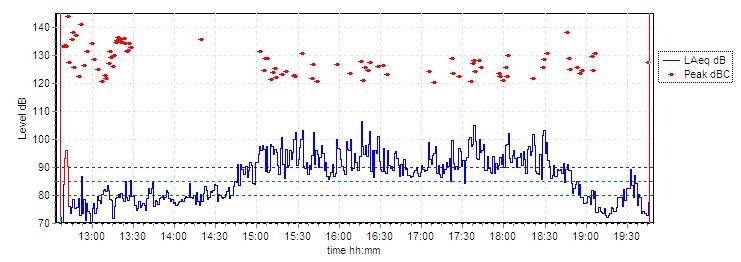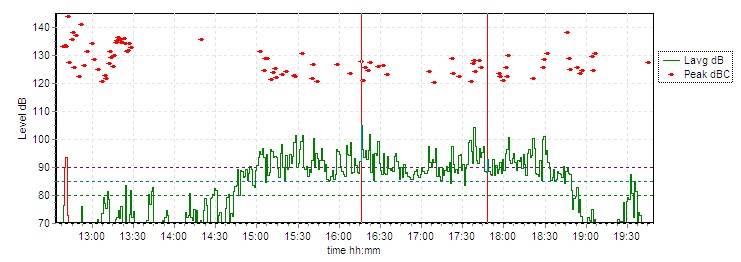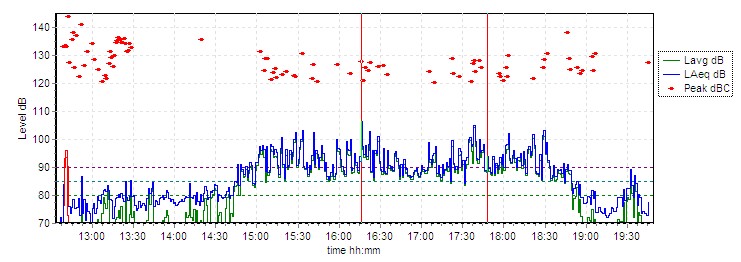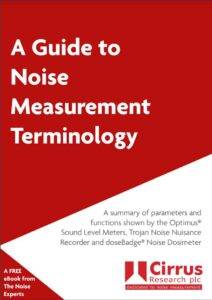How loud was the Superbowl? 107dB(A)!
Sunday night was the 46th Superbowl played between the New York Giants and the New England Patriots at the Lucas Oil Stadium in Indianapolis, Indiana.
The National Institute for Occupational Safety & Health (NIOSH) who are based in Atlanta, Georgia set up a Twitter stream (#noiselevel) and asked anyone who was at the game to measure the noise levels using apps on mobile phones. They also had someone at the game who had a proper noise dosimeter.
This person measured the noise level at 107dB(A) LASmax when the Patriots scored and you can see this on a video here.
In 2006 we visited the San Diego Chargers to see a game against the Cleveland Browns and we used a Cirrus CR:110A doseBadge Noise Dosimeter to measure the noise levels over the game.
As the doseBadge can measure 2 channels at the same time, we set one channel up to measure according to the UK Noise at Work Regulations with a 3dB Exchange Rate, no threshold, no time weighting and a 8 hour criterion time. The criterion level was set to 80dB.
The second channel was set up with a 5dB exchange rate, an 80dB threshold, slow time weighting and an 8 hour criterion time. The criterion level was set to 85dB.
Below are the graphs of the noise levels in 1 minute samples. Each of the lines is a 1 minute sample (Leq or Lavg) and the red dots are the Peak(C) values in each of those minutes.
Channel 2 Leq & Peak(C)
Channel 1 Lavg  & Peak(C)
Comparing the two channels
Although the data from these two channels look very similar, when they are put on the same graph, you can see the differences. The graph below shows the Leq (Blue) and Lavg (Green) along with the Peak(C) values.
How different is the data?
One difference that you can see from the graph is that when the noise levels are below 80dB on the Leq trace (Blue), the Lavg values are lower. This is the effect of the 80dB threshold. Remember that the 80dB threshold means that any noise values that are below 80dB are considered to be zero by Channel 2.
The reason that there are values shown on the Lavg graph below 80dB is that each of the samples is an average over a 1 minute period and so there may have been noises both above and below 80dB during the 1 minute.
When the noise levels are above 80dB, the slow time weighting becomes a significant factor. Remember that the data used for the Leq values is simply an integration of all of the noise energy in that 1 minute whereas the Lavg is an integration of the noise energy after it has been passed through the Slow time weighting.
The effect of this is that when the noise levels are changing quickly, the Lavg will tend to have a lower value than the Leq.
Each time that the Chargers scored, a cannon fired! This is quite impulsive in nature and so the slow time weighting had an effect.
Numbers, numbers…
So, how loud was the game?
The highest 1 minute Leq was 106.5dB(A). Remember that this was an average over the 1 minute and so the noise will have been higher (and also lower) at some point during the minute. During that 1 minute, the Lavg was 104.9dB(A) and the Peak(C) value reached 127.7dB(C).
How different were the OSHA & UK configurations?
Although the highest noise levels measured were very close for both of the configurations, when you look at the noise across the whole measurement period, you can see some significant differences.
With the OSHA setup, we have an Lavg of 88.9dB(A) and a TWA of 88.1dB(A). With the UK setup, we have an Leq of 92.6dB(A) and an LEP,d of 92.1d(A). As discussed previously, the factors that contributed to these differences are the 80dB threshold and the slow time weighting used in the OSHA setup.
However, the most significant difference is when you look at these values as % Dose. For the same noise, the OSHA setup records a % Dose of 153% whilst the UK setup records the same noise at a 511% noise dose.
Remember that this is the same noise recorded by both channels and the differences reflect the different methodology in the OSHA and UK occupational noise standards.
In this example, the measurement period was 7 hours and 8 minutes which includes a couple of hours before the game and an hour after the game. the 60 minutes of actual play was spread out over 4 hours.
Jaymee-lee Tolliday
Latest posts by Jaymee-lee Tolliday (see all)
- Turning Down the Volume: How the Trojan Noise Nuisance Recorder can help create a quieter world - 13th February 2024
- Festive Opening Hours 2023 - 6th December 2023
- Award of Excellence for Cloud-Based Monitoring Solutions 2023! - 20th November 2023




